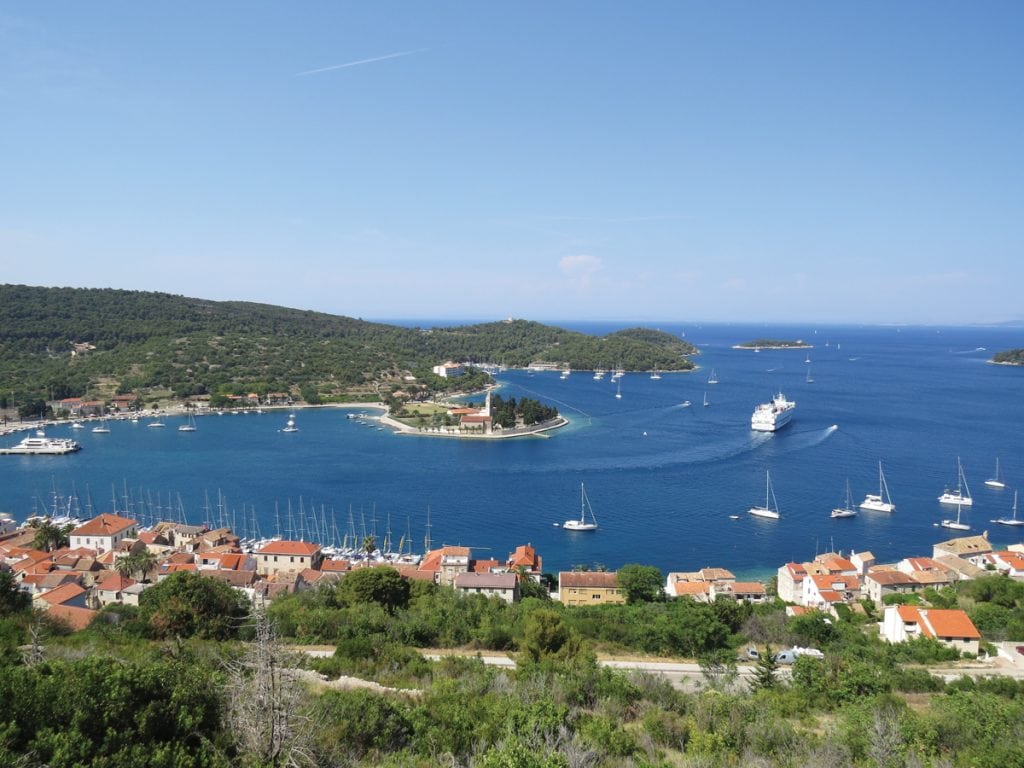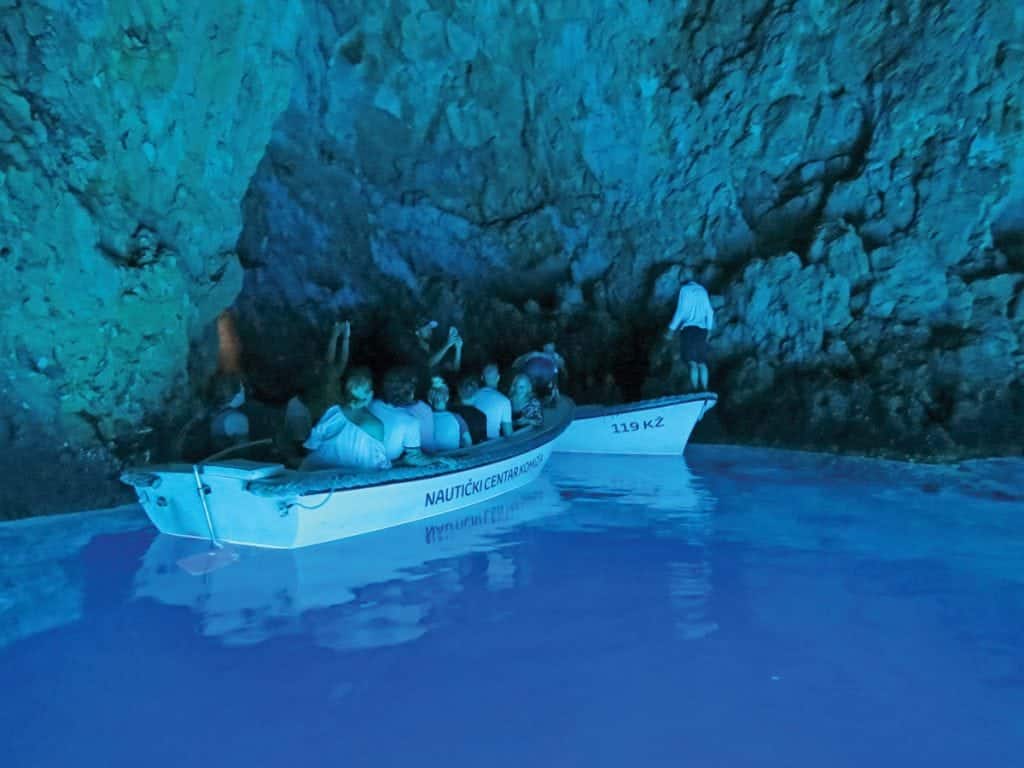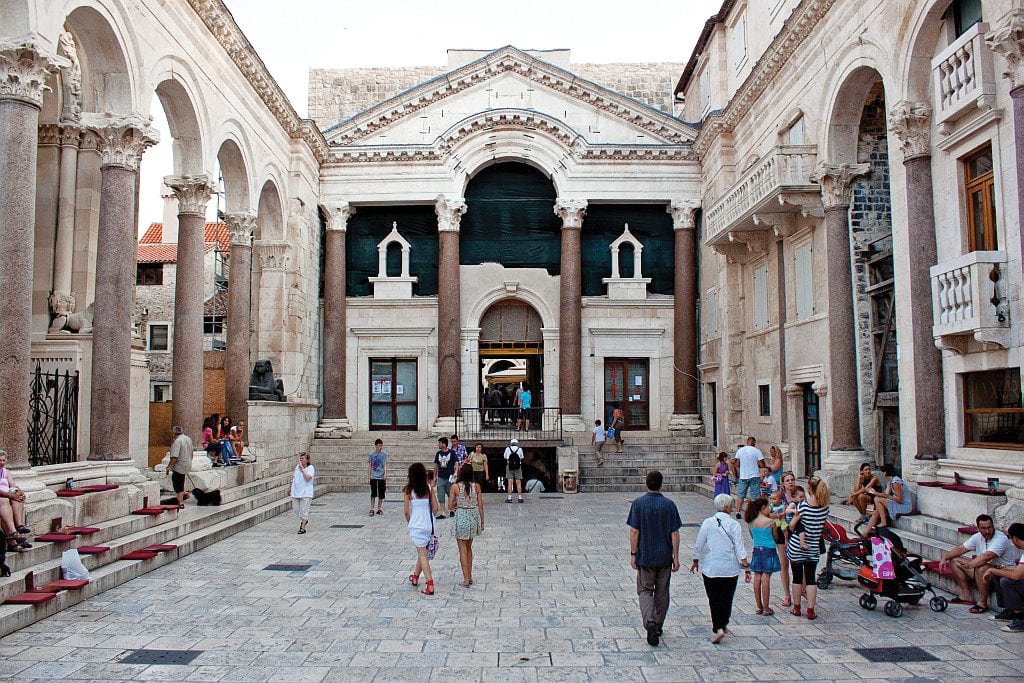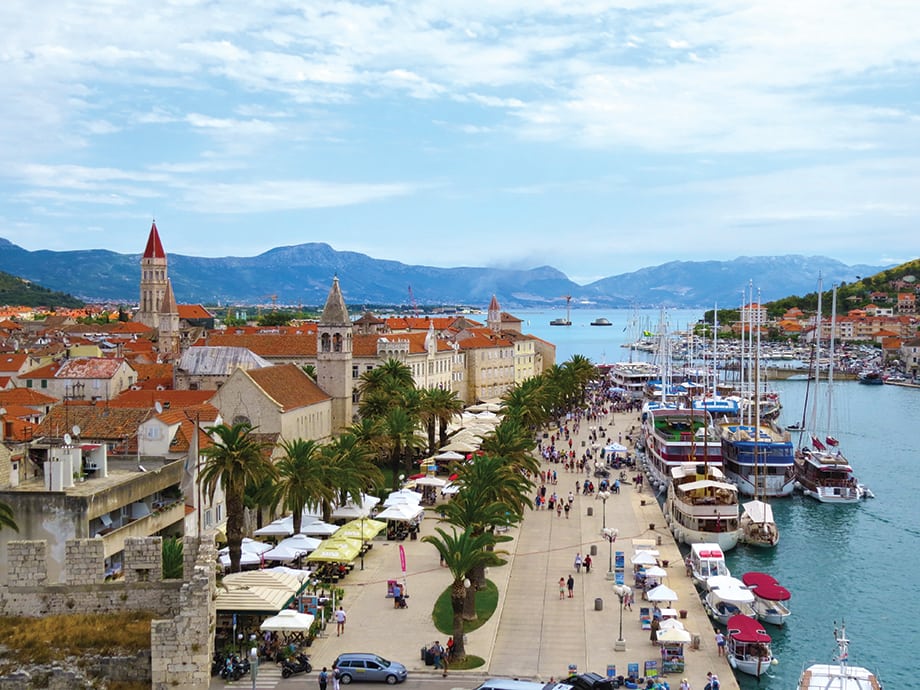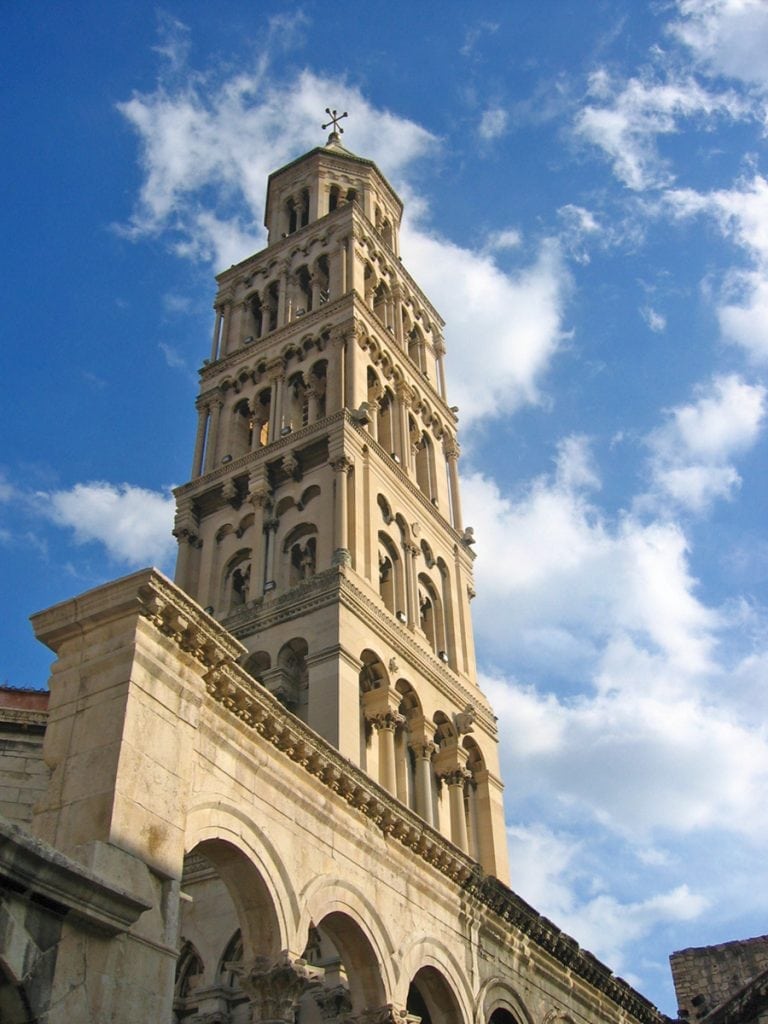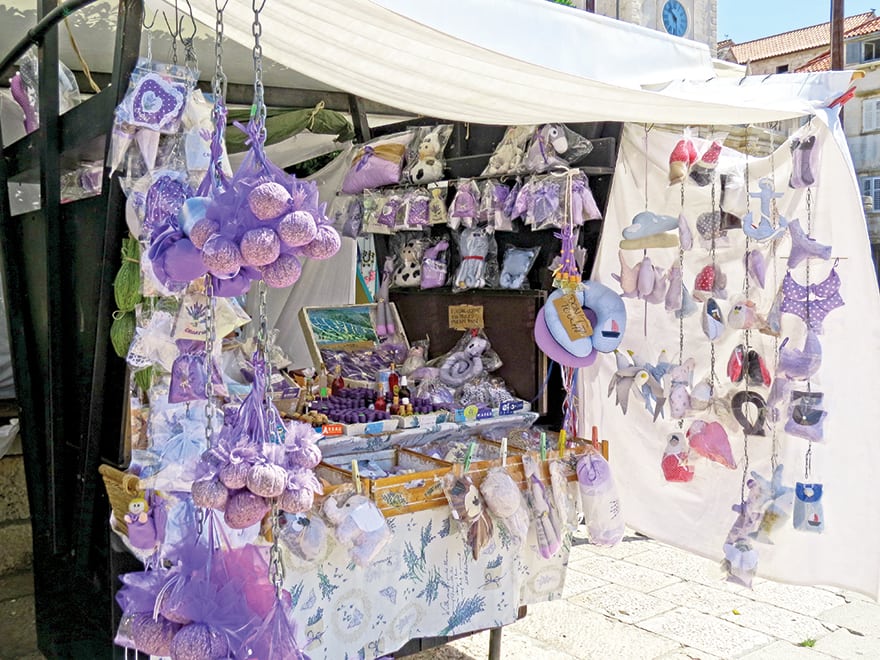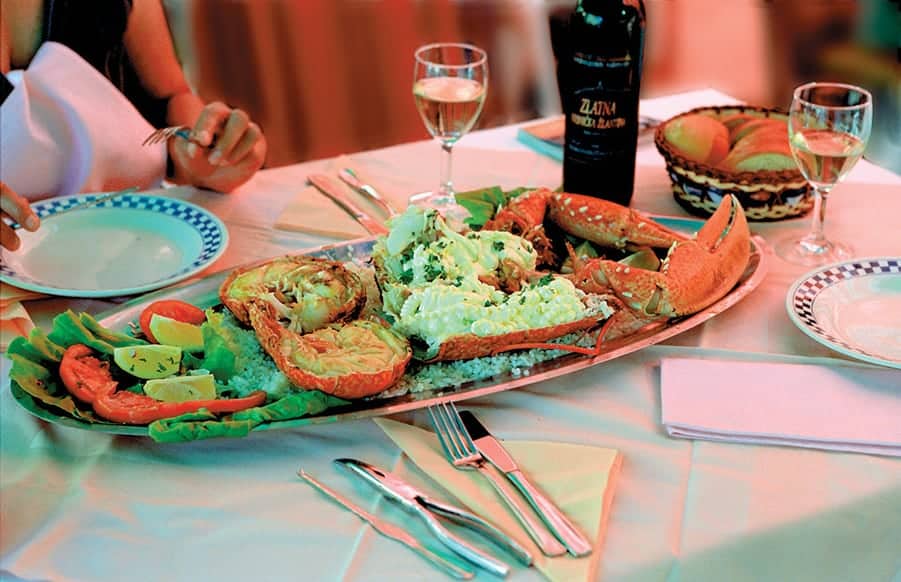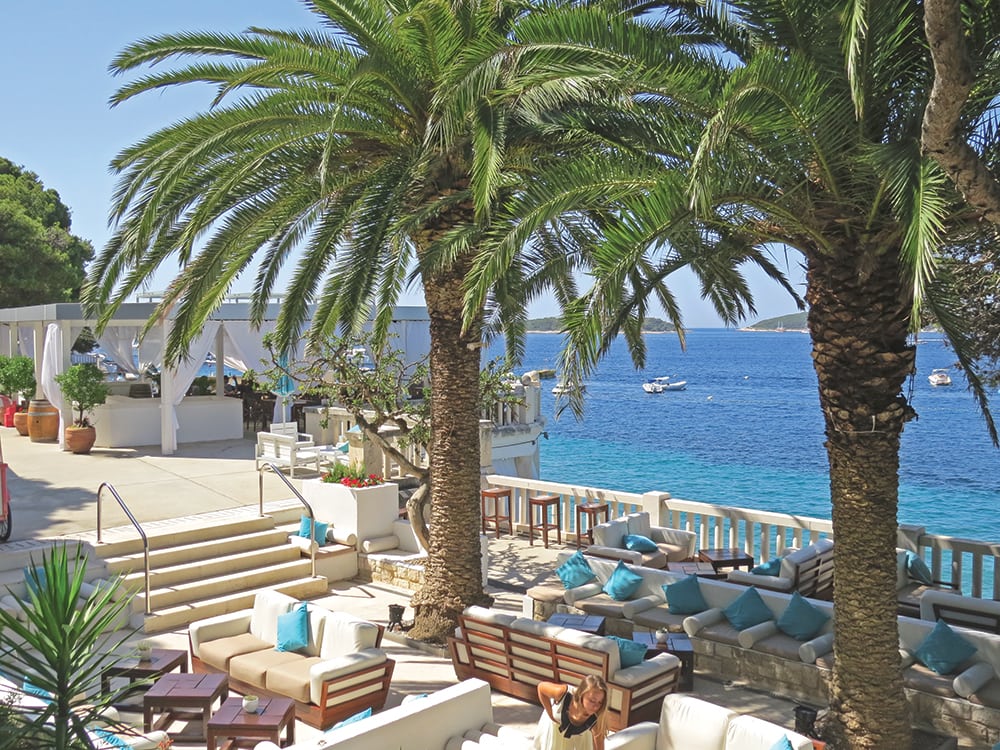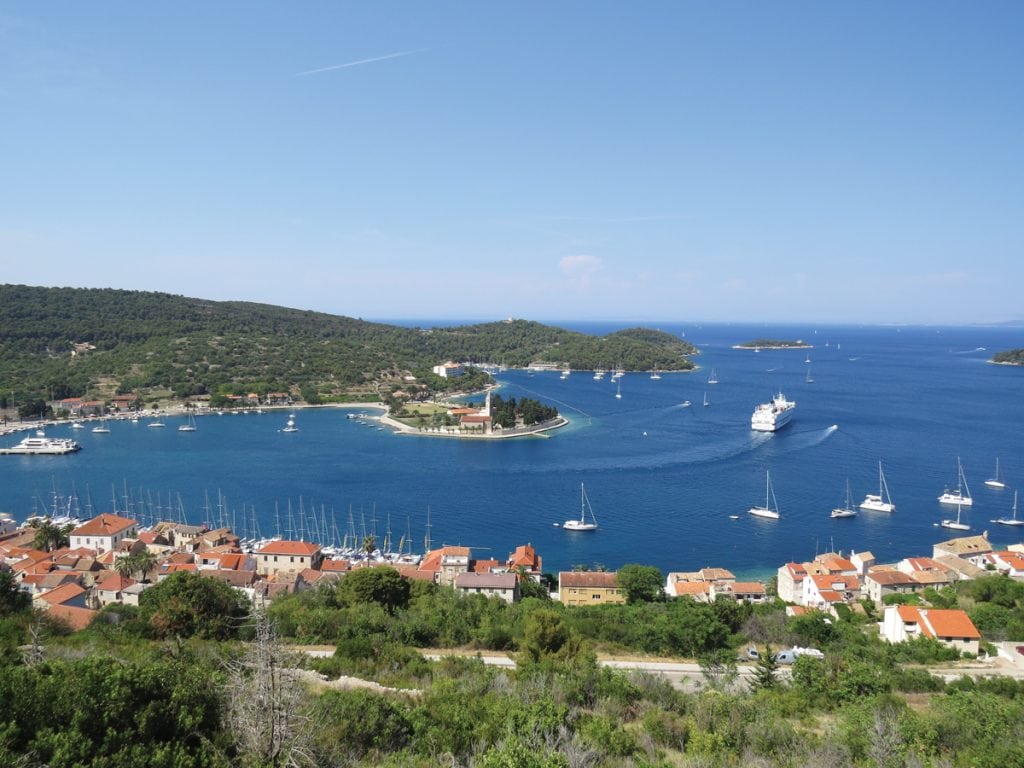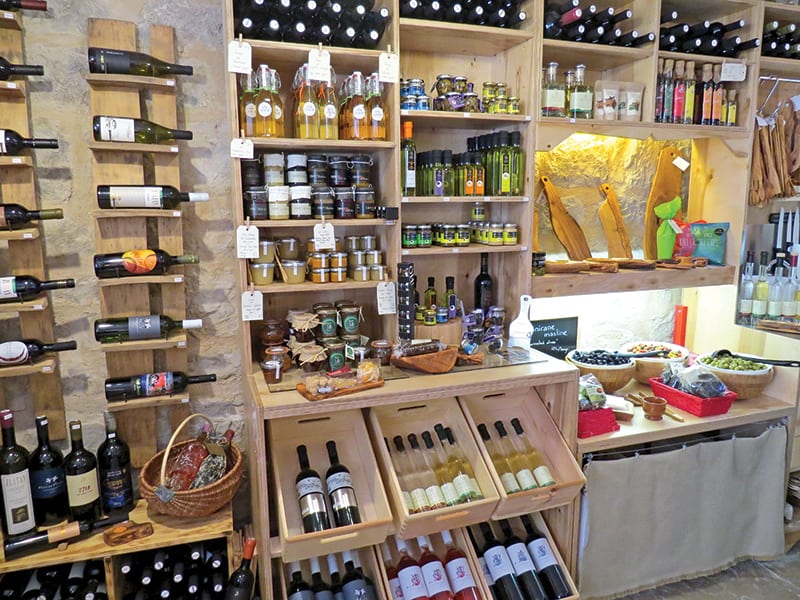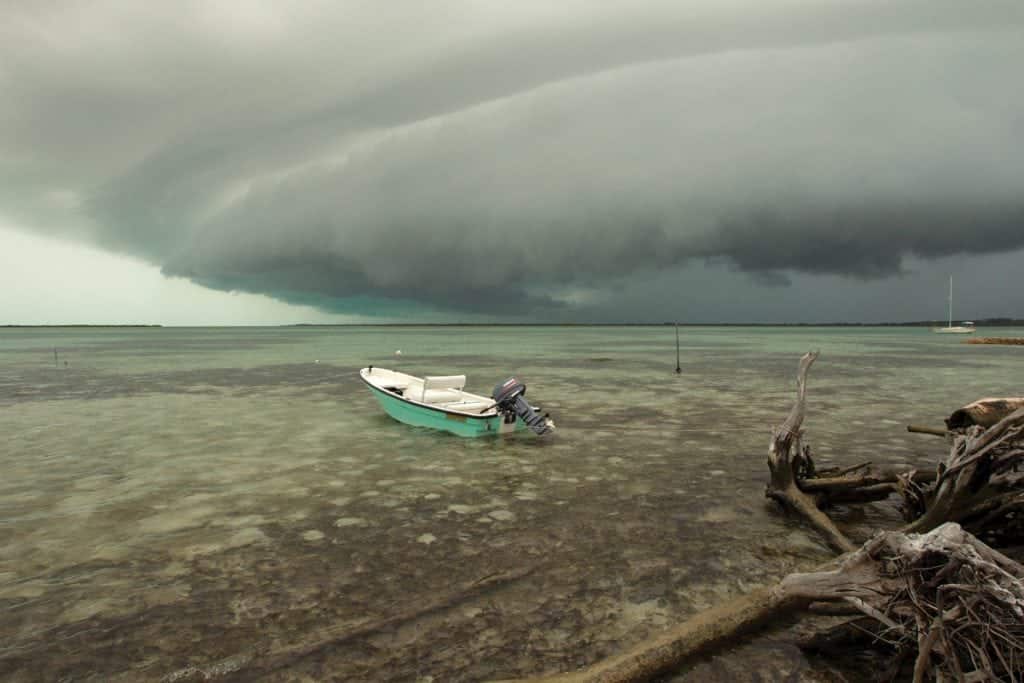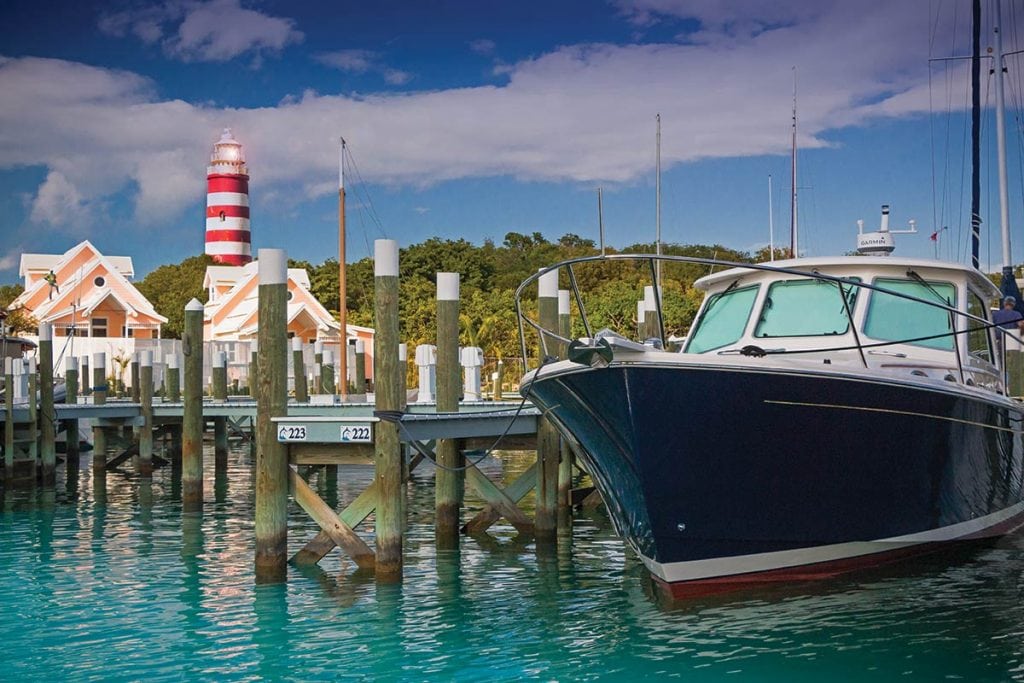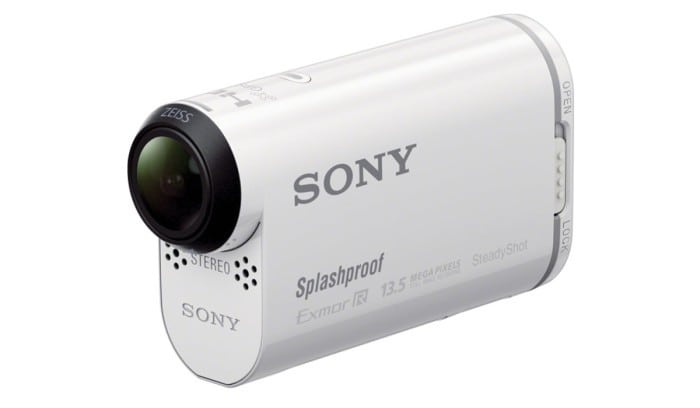The unique backdrop provides a bareboat charter unlike any other
There’s more to chartering than palm trees and umbrella drinks, although that’s not bad either. For me, combining history and boating is the ultimate vacation, and there’s no better place to do this than chartering in the Mediterranean. Greece usually comes to mind when you think of strolling through antiquities. But if you haven’t visited Croatia, consider this: delicious cuisine, sensational wine, excellent scenery, fantastic boating, and a depth of history you can’t imagine. This, my friends, is the ultimate charter.
Croatia redefines history altogether. Thirty minutes after deplaning in Split, you may find yourself visiting the old town and Diocletian’s Palace, which is less a palace and more like half the old town itself. A UNESCO Heritage Site, the palace was built by a fourth-century Roman emperor but was repurposed by every generation since. Stand in the central square or peristyle and you’ll see evidence of many civilizations that passed through. Neoclassical architecture mixes with the walls of the temple of Jupiter on one side, and the Cathedral of St. Domnius is on the other. In the middle are Egyptian granite columns and even a sphinx. Point your camera anywhere and you’re bound to capture centuries of history in a single click.
Agana Marina, 30 miles from Split, is home to experienced charter operators The Moorings and Sunsail. Although sailboats vastly outnumber powerboats in the country, The Moorings has a nice selection of large powercats that will cover the territory of 30 Dalmatian islands with ease. Although you’ll be provided a cruising guide, bring your own
charts of the Dalmatian Coast as well as a complete tourist guide like one from Lonely Planet. I like longer charters, especially if I’m going to travel all the way to Europe, but
there’s another reason to think beyond the weeklong vacation. The Dalmatian Coast is spectacular and with a powercat, you can make it all the way from the medieval Trogir Town down to the breathtaking Dubrovnik. The trip is worth the effort—I promise. Sadly, having only one week to work with, our itinerary was ambitious: nine destinations on five
islands. On our first day, we headed out to Vis Town (on Vis Island) and tied up Medmoor
style to the wall. We strolled through the magical Vis then organized a taxi to Komiza, a charming fishing village on the other side of the island. Worth every penny or “kuna”,
the inland tour included a look at vineyards and various caves that harbored partisans during World War II.
The next day we set course for Bisovo, a small island to the west of Vis and home of Modra Spilja (Blue Cave). We caught a mooring in the crowded harbor and boarded a skiff to enter the blue cave; it’s the only way to see it since no dinghies are allowed. Our small boat was loaded to the gunwales with sunburned tourists and without so much as a “Duck!”, the driver jammed us through the mouth of the very low cave and cut the outboard power. Out came a pole he used for propulsion from then on, like an Italian canal gondola.
Everything glowed a bright blue, the result of ambient light bouncing off the white sand below. It was a delightful adventure right down to the equally unnerving egress from the
cave via the same low hole. With plenty of daylight left, we headed for Pakelni Otoci
(loosely translated as Hell Islands). This string of islets clearly serves as the city getaway for local yachties. Beaches and water toys abound here around Sveti Klement Island during the summer, and the various coves are great windbreaks where you can enjoy a sundowner surrounded by natural beauty and no city in sight.
Only minutes from this natural paradise is Hvar Town, the polar opposite of laidback beachcombing. With bustling cafés and a chic, superyacht clientele chauffeured in on six-figure tenders, Hvar is the place to be seen. But even the glitterati bring their hiking shoes to walk up the steep but lovely trail to the fort. The hike is worth it and as a reward
offers spectacular views of the harbor below. Just on the north side of Hvar Island and deep inside an inlet is Stary Grad (Old City) that is much less glitzy than Hvar but exudes an irresistible old-world charm. No longer a part of the dour Eastern Bloc, Croatians are great entrepreneurs; every corner hides a quaint café or gourmet goodies shop that would make Napa Valley foodies drool.
As we made our counterclockwise journey, each subsequent town was more beautiful than the last, and we thought we were rock stars in choosing the best of the best. However, as we pulled into the next few towns like Milna on Brac Island and Maslinica on Solta Island, we realized it wasn’t our superior ability that made each town mesmerizing but that each town simply was mesmerizing. Tiny restaurants were packed into every alley and hotels added exotic flair by positioning curtained lounges on rocky beaches, an aesthetic that was all the more interesting due to the contrast. These hideaways are the perfect place to relax with a glass of rakija, the country’s answer to grappa, or slivovica, a plum brandy that will strip paint off a fence.
Local Knowledge
Each charter destination has its quirks and Croatia is no exception. The first thing you’ll notice is the Croatians’ approach to maritime rules of the road. Despite having to be somehow “certified” to charter here (RYA, European ICC or American Sailing Association’s IPC certificates), it’s the Wild West on the water. Right-of-way rules are mainly driven by testosterone and horsepower. Don’t be surprised to have boats race you to the quay and tie up even as you’re already backing toward the wall, fenders out.
Second, when cruising here in the summer, watch for “The Yacht Week”. The name is deceptive as this sailing odyssey for 20- and 30-somethings lasts all summer and not just a week. It’s a relentless onslaught on both visitors and locals.
With a new batch of porkpie hat-toting crew, licensed skippers ply the local waters, maneuvering from one all-night party to the next. Many charter companies dedicate
a portion of their fleet for the entire summer to this enterprise due to its marketing reach and youth appeal. It’s not unusual to see 20 “The Yacht Week” boats headed for a quay near you since there are several hundred of these charter boats out each week. Whenever
we spotted their long banners flying from backstays or huge stickers emblazoned on hulls, we quickly picked up and went elsewhere. But if you’re 20-something and like to drink, this flotilla may be welcome and the people watching is spectacular. For the rest of us, quieter, more remote anchorages and more cultural destinations may be preferable.
Finally, being of Eastern European descent myself, I found the language decipherable, but for most Canadians, Americans or Brits, Croatian signage may be cause for consternation. Eastern Europeans have an affinity for consonants and island names like Krk have no vowels at all, proving to be tongue-twisters for the uninitiated. Add to that a bounty of accent marks and plural and possessive word endings that change the spelling of a word completely, and you have an alphabet soup. However, most Croatians love to practice their English and will often go out of their way to help you out, especially if
you look particularly lost. English is spoken in most restaurants and shops in tourist
destinations.
The best defense against particularities is humor, so be sure to smile more and judge less and it will all seem amusing. Also, be sure to keep an eye out for telltale banners and clueless navigators to ensure that you have the most comprehensive charter vacation
possible.
By Zuzana Prochazka, Southern Boating
December 2017

